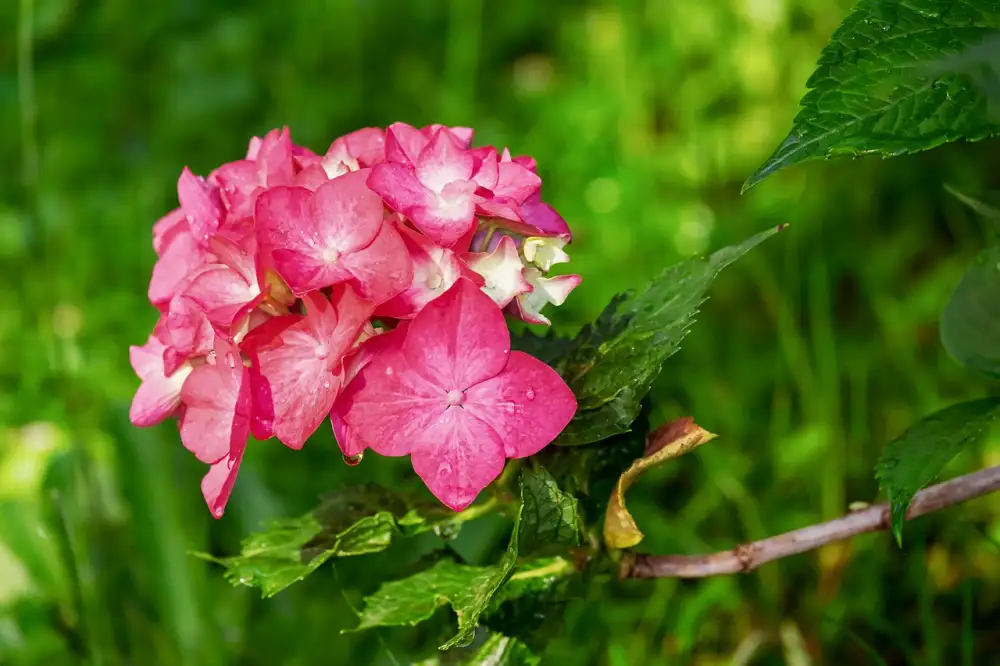Mastering Hydrangea Care: Essential Tips for a Thriving Home Garden

Hydrangeas are stunning flowering plants that can add a touch of elegance and beauty to any home garden. With their large, colorful blooms and lush foliage, they are a favorite among garden enthusiasts. However, caring for hydrangeas requires some knowledge and attention to detail. In this article, we will explore the essential tips for mastering hydrangea care, from choosing the right location to protecting them from pests and diseases. By following these guidelines, you can ensure your hydrangeas thrive and bring joy to your outdoor space. So let's dive in and discover the secrets of successful hydrangea care!
Choosing the Right Location
Choosing the right location for your hydrangeas is crucial for their overall health and growth. These beautiful plants thrive in areas with partial shade, receiving about 4-6 hours of sunlight per day. Avoid planting them in direct sunlight as it can cause their leaves to burn and wilt.
Additionally, hydrangeas prefer well-drained soil that is rich in organic matter. Before planting, make sure to amend the soil with compost or peat moss to improve its fertility and drainage. This will help prevent waterlogged roots, which can lead to root rot and other diseases.
Consider the size of your hydrangea variety when selecting a location. Some varieties can grow quite large, so ensure there is enough space for them to spread out without overcrowding other plants or structures nearby.
Lastly, take into account the climate in your area. Hydrangeas are hardy plants but may struggle in extreme temperatures. If you live in a region with hot summers or harsh winters, choose a location that offers some protection from these weather conditions, such as near a building or under the canopy of larger trees.
By choosing the right location for your hydrangeas, you are setting them up for success and ensuring they have the best possible environment to thrive and produce beautiful blooms year after year.
Proper Watering Techniques
Proper watering is essential for the health and vitality of your hydrangeas. These beautiful flowers require consistent moisture, but overwatering can be just as damaging as underwatering. To ensure proper hydration, water your hydrangeas deeply once or twice a week, allowing the soil to dry out slightly between waterings. Avoid wetting the foliage to prevent disease. Mulching around the base of the plants will help retain moisture and regulate soil temperature. Remember, it's better to underwater than overwater, so always check the soil before reaching for that watering can.
Fertilizing Hydrangeas
Fertilizing Hydrangeas is an important aspect of their care that can greatly enhance their growth and bloom. The key is to provide them with the right nutrients at the right time. In general, hydrangeas benefit from a balanced fertilizer that contains equal amounts of nitrogen, phosphorus, and potassium. This will promote healthy foliage, strong stems, and vibrant flowers. It is best to fertilize hydrangeas in early spring before new growth begins. Avoid fertilizing late in the season as this can stimulate new growth that may not have enough time to harden off before winter. Remember to always follow the instructions on the fertilizer packaging and apply it evenly around the base of the plant. With proper fertilization, your hydrangeas will thrive and reward you with a stunning display of color all season long.
Pruning and Deadheading
Pruning and deadheading are essential tasks for maintaining the health and beauty of your hydrangeas. Pruning helps shape the plant and encourages new growth, while deadheading promotes continuous blooming.
For most hydrangea varieties, pruning should be done in late winter or early spring before new growth begins. Start by removing any dead or damaged branches, cutting them back to healthy tissue. Next, thin out crowded areas to improve air circulation and reduce the risk of disease.
When it comes to deadheading, simply remove spent flowers by cutting them back to a healthy set of leaves or buds. This will redirect the plant's energy towards producing more blooms rather than seed production.
However, it's important to note that some hydrangea varieties bloom on old wood, while others bloom on new wood. If you're unsure which type you have, do some research or consult a gardening expert to ensure you don't accidentally prune off next year's blooms.
By regularly pruning and deadheading your hydrangeas, you'll help maintain their shape, encourage abundant flowering, and promote overall plant health.
Protecting Hydrangeas from Pests and Diseases
To ensure the health and beauty of your hydrangeas, it is crucial to protect them from pests and diseases. One common pest that can wreak havoc on hydrangeas is aphids. These tiny insects feed on the sap of the plants, causing stunted growth and distorted leaves. To prevent aphid infestations, regularly inspect your plants and remove any affected leaves or stems. You can also use insecticidal soap or neem oil to control aphids.
Another common problem for hydrangeas is powdery mildew, a fungal disease that appears as a white powdery coating on the leaves. To prevent powdery mildew, make sure your plants have good air circulation by spacing them properly and avoiding overcrowding. If you notice signs of powdery mildew, treat it with a fungicide specifically designed for this disease.
Slugs and snails are also known to feast on hydrangea leaves, leaving behind unsightly holes. To deter these pests, you can create barriers around your plants using copper tape or diatomaceous earth. Additionally, keeping the garden clean and free of debris will discourage slugs and snails from taking up residence.
Lastly, be mindful of other potential threats such as spider mites and leaf spot diseases. Regularly inspect your plants for any signs of damage or discoloration and take appropriate action if necessary.
By protecting your hydrangeas from pests and diseases, you can ensure their longevity and enjoy their stunning blooms for years to come.
Winter Care for Hydrangeas
During the winter months, it is important to provide proper care for your hydrangeas to ensure their survival and health. Here are some essential tips for winter care:
1. Mulching: Before the first frost, apply a layer of mulch around the base of your hydrangeas. This will help insulate the roots and protect them from freezing temperatures.
2. Pruning: Avoid pruning your hydrangeas in late fall or winter, as this can stimulate new growth that may be susceptible to cold damage. Instead, wait until early spring to prune any dead or damaged branches.
3. Watering: While hydrangeas are dormant during winter, they still require some moisture. Water them sparingly, making sure not to overwater as this can lead to root rot.
4. Protection from Frost: If you live in an area with harsh winters, consider covering your hydrangeas with burlap or a frost cloth to protect them from freezing temperatures and drying winds.
By following these winter care tips, you can ensure that your hydrangeas survive the cold season and come back strong and beautiful in the springtime.
In conclusion, mastering hydrangea care is essential for creating a thriving home garden filled with beautiful blooms. By choosing the right location, providing proper watering techniques, fertilizing regularly, pruning and deadheading, protecting from pests and diseases, and offering winter care, you can ensure your hydrangeas will flourish. With these tips in mind, you can enjoy the vibrant colors and stunning beauty of hydrangeas in your own backyard. So go ahead and start creating your very own hydrangea paradise today!
Published: 11. 12. 2023
Category: Home



